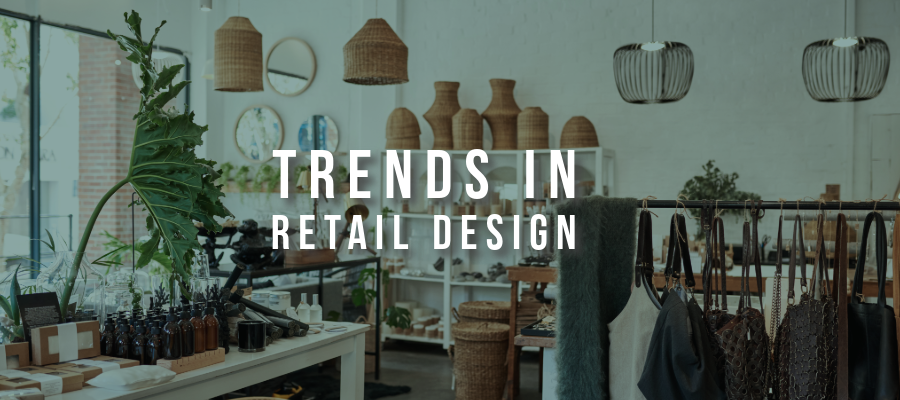
Interior Design in Retail Spaces, 5 Trends
Lately, there has been a lot of debate over the future of retail. Where will consumers spend most of their money, online or in a brick-and-mortar store? Are the days of in-person shopping truly passed? A recent survey from ICSC says that Gen Z enjoys both. About 97% prefer in-person shopping compared to 95% who prefer online. However, with the easy access of digital retail spaces only continuing to climb, brick-and-mortar retail spaces are faced with a challenge. How can they make their stores places where consumers want to visit and spend both their time and their money? This is where interior design in retail spaces is critical to creating a space where people want to be.
Interior design in retail spaces is seeing five key trends.
Adaptive Spaces
Flexible spaces that can quickly shift and adapt to suit the consumer and business’s needs is a trend on the rise. Movable walls and fixtures allow spaces to transform easily to keep up with trends and surprise customers, keeping them engaged and wanting to return to experience the space in a new way. Furthermore, having an adaptive space allows retailers to stay competitive in an ever-evolving market.
Eco-friendly and Biophilic Design
To meet the needs and values of today’s consumer base, it’s essential to incorporate both eco-friendly and biophilic design elements in your retail space. This includes considering the materials you select in the design process for your space based on their impact on the environment, as well as finding ways to bring elements of nature into your space. Think energy-efficient lighting and green building practices, as well as natural materials such as wood and stone and organic shapes such as curves and waves. And don’t be shy about telling your customers about these choices. Many people want to support businesses that share their values.
Bold Colors and Patterns
Although minimalism is still in, many retailers favor including bold colors and patterns to add visual interest to their spaces. The possibilities are endless, from pops of flair around the space to layering many different elements. Plus, in the era of digital printing, having a place in your retail space that piques visual interest allows you to create an Instagram-worthy experience.
Experiential Design
Experiential design is multisensory and immersive. When used effectively, interior designers embrace all senses to connect with the consumers and create an interactive experience. Designers may include elements that add a smell, sound, or touch. It may also utilize technology, such as putting touchpads around stores, to give consumers another way to interact with the products.
Creating Communal Space
One of the main reasons consumers choose an in-person retail experience over an online one is for the sense of community. In-store shopping has the potential to feel more personal. Customers form relationships by interacting with staff, as well as other shoppers. Interior designers can facilitate this by creating communal spaces within retail settings. By incorporating gathering areas into a design, it helps consumers feel connected to a space they will want to return to again.
Share this post
Author
DESIGN/COLOR TRENDS AND AWESOME INFORMATION IN YOUR INBOX
Sign up for our monthly trend letter




